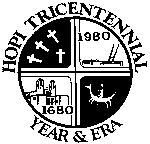History, Department of
Date of this Version
September 2008
Document Type
Book Chapter
Abstract
“The central theme of the Kachina Cult is the presence of life in all objects that fill the universe.” — Barton Wright
“The concept of fertility is central in Hopi thinking. It applies not only to good crops but to the general multiplication of good and desired objects and beings . . . Thus, as women give birth to the people and cause them to multiply, so do the kachinas cause food and other blessings to multiply.” — Alice Schlegel
Eight examples are presented in this section; others are included on previous pages
Sculptural forms: Figures 68-70
68. EOTOTO AND AHOLI, Kachina Chief and Kachina Chief’s Lieutenant Sculpture
69. WUYAK-KUITA (BROAD-FACED KACHINA) — Mikandit (Hei Lilly), carver, Second Mesa, Arizona
70. CHUSONA (HOPI SNAKE DANCERS)
Painted images: Figures 71-75 71. COMING OF CHAVEYO — Nell David, Sr., painting, acrylic.
72. PUEBLO WARRIOR DANCE — Neil David, Sr., painting, acrylic.
73. MUDHEAD DANCE — COOCHSIWUKIOMA (Delbridge Honanie), painting, acrylic.
74. ZUNI SHALAKO WITH MUDHEAD — Neil David, Sr., painting, acrylic.
75. KACHINA OF ONE HORN — DAWAKEMA (Milland Lomakema), painting, acrylic.



Comments
Published in Hopi Nation: Essays on Indigenous Art, Culture, History, and Law, edited by Edna Glenn, John R. Wunder, Willard Hughes Rollings, and C. L. Martin (Lincoln, NE: UNL Digital Commons, 2008). Copyright © 2008 the Estate of Edna Glenn, Willard Hughes Rollings, Abbott Sekaquaptewa, Barton Wright, Michael Kabotie, Terrance Talaswaima, Alice Schlegel, Robert H. Ames, Peter Iverson, and John R. Wunder. All images and artwork are copyright by the individual artists; for a listing see pages 9-14.